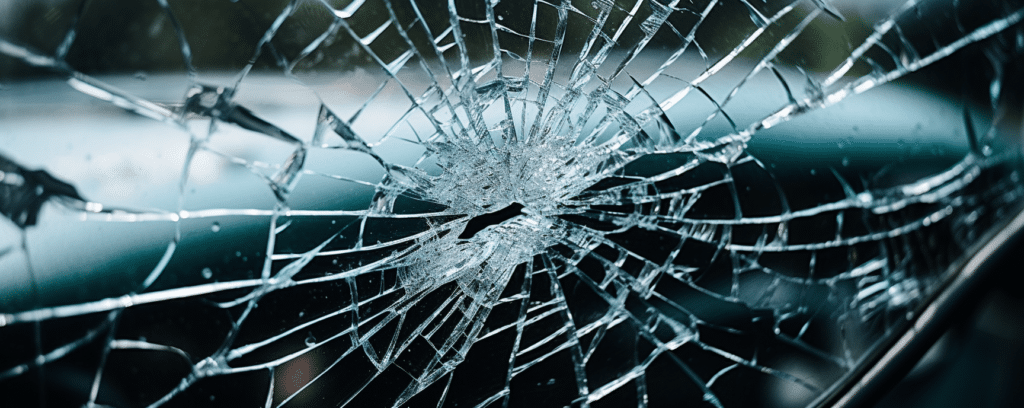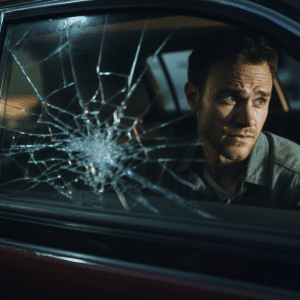
When flying debris hit my car, what’s next? This no-nonsense guide explains liability, navigating insurance claims, and critical initial actions, empowering you to tackle the situation with confidence. We provide the information you need without the fluff—so you can move forward.
Key Takeaways
- Road debris accidents, ranging from unsecured loads to natural occurrences causing flying debris, are frequent and dangerous, resulting in numerous accidents, injuries, and fatalities each year.
- Liability in flying debris accidents can be complex and may involve the responsible party’s negligence, such as drivers with unsecured loads or entities tasked with road maintenance failing to ensure safe conditions.
- Insurance coverage, such as collision, comprehensive, or uninsured/underinsured motorist coverage, plays a crucial role in financial protection and claims for damages after a flying debris accident.
Contact us today and we will help you get the compensation that you deserve.
Understanding Flying Debris Accidents
Flying debris accidents are more common than you might imagine. These incidents involve objects that aren’t meant to be on the roadway, from simple litter to unsecured loads like fallen trees or construction barriers. Dangerous road debris can smash through windshields or create obstacles on the road, posing unexpected hazards for drivers when flying debris hits their vehicles.
According to data, road debris was a factor in approximately 50,658 police-reported road debris accidents each year in the United States between 2011 and 2014, leading to roughly 9,805 injuries and 125 fatalities annually. The types of car accidents that can ensue vary widely, depending on factors such as the driver’s response and speed at the time of the encounter with the debris, potentially resulting in a car accident. It’s important to be aware that road debris accidents happen, and taking precautions can help avoid them.
Common Causes of Flying Debris
Appreciating the main causes of flying debris is a vital part towards avoiding such incidents. One of the leading causes is improper maintenance and unsecured loads from vehicles. Vehicle parts becoming detached, unsecured cargo like furniture and appliances, and tow trailers separating are among the most common types of vehicle debris.
Natural occurrences, such as falling tree limbs and environmental conditions such as high winds and the accumulation of ice and snow on vehicles, can also cause dangerous flying debris. This underscores the importance of not only securing loads but also maintaining vehicles and being mindful of weather conditions.
Potential Consequences of Flying Debris Accidents

- Property damage
- Personal injury
- Vehicle damage
- Road hazards
For instance, a 20-pound unsecured object flying off a moving vehicle at 55 miles per hour can cause severe damage and injury upon collision with a g-force of 1,000 pounds.
Due to the unexpectedly abrupt nature of flying debris accidents, there is often minimal time to react, which can escalate to grave accidents and injuries. From 2011 to 2014, unsecured cargo was a factor in over 200,000 crashes, resulting in approximately 39,000 injuries and 500 deaths.
Determining Liability in Flying Debris Accidents
Establishing responsibility in a flying debris accident can be quite intricate. The party responsible for damage caused by road debris might be the driver who failed to secure their load or the entity in charge of road upkeep. Liability is established through negligence, which occurs when a party’s failure to exercise an expected level of care, such as securely fastening cargo, leads to damages or injury.
Even though drivers are frequently held responsible for accidents instigated by road debris, the precise accountability hinges on the characteristics of the debris and the particular circumstances of the accident. It’s important to remember that liability is not always straightforward, and each case can present unique challenges.
Negligent Drivers and Unsecured Loads
Drivers are legally bound to secure their loads, and failure to do so could lead to them being held liable in the event of an accident. Regular checks on cargo security are part of a driver’s duty, and neglecting this responsibility can be considered negligence, making them a negligent driver. In such cases, the negligent driver’s vehicle may pose a significant risk on the road.
In the event that truck drivers or trucking companies breach load securement regulations and cause an accident, either or both may be held answerable for the consequent damage or injuries. Accidents involving unsecured loads can lead to severe, life-altering injuries requiring extensive medical treatment, underscoring the importance of load securement.
Construction Companies and Road Maintenance
In some cases, liability for flying debris accidents may extend beyond individual drivers. Construction companies, for instance, are obligated to properly manage their worksites, ensuring materials are not allowed to spill onto roadways and contribute to accidents.
Similarly, departments of transportation and other government agencies are charged with maintaining roadways and promptly clearing debris to mitigate accident risks. Poor maintenance practices, such as failing to repair crumbling surfaces or perform regular cleaning, can lead to the formation of hazardous debris and potential liability for government entities.
Insurance Coverage for Flying Debris Damages
In light of the potential damages and injuries that flying debris accidents can cause, it is imperative to have suitable insurance coverage. If you have collision coverage, uninsured motorist coverage, or comprehensive auto insurance, these may assist in covering the repairs for damages caused by flying debris. These types of coverage can be beneficial in situations where unexpected accidents occur..
These types of coverage provide financial protection, regardless of whether the debris was a result of another vehicle, an object on the road, or even a natural occurrence. The type of coverage that applies will depend on the specific circumstances of the accident and the terms of your insurance policy.
Collision Coverage
Collision coverage typically pays for damages to your vehicle caused by collisions with another vehicle or an object, like road debris, regardless of who is at fault. This can provide protection for damages resulting from running over a tire, which is considered a flying debris accident.
Upon incurring damage from a flying debris accident such as running over a tire, it would be advisable to lodge a claim with your insurance company to have the repairs covered through collision coverage.
Comprehensive Coverage
On the other hand, comprehensive coverage is designed to cover vehicle damage in situations other than collisions, which includes a variety of non-collision incidents. Specific scenarios covered by comprehensive insurance encompass:
- Fire
- Wind
- Hail
- Flood
- Vandalism
- Hitting an animal
- Damage from flying debris
Inevitable flying debris, which a driver could not dodge despite exercising caution like objects falling from another vehicle or a fallen tree branch, are also included in comprehensive insurance coverage.
Uninsured/Underinsured Motorist Coverage
Uninsured/underinsured motorist coverage protects you if you’re in an accident with an at-fault driver who does not carry liability insurance or whose liability limits are too low to cover the medical expenses or property damage they have caused.
In some states, uninsured/underinsured motorist coverage is mandatory, providing additional financial protection to policyholders in the event of an accident with a driver who has insufficient or no insurance. This coverage can also be ‘stacked’, implying that the coverage limits can be amplified based on the number of vehicles enlisted in the policy, thus offering enhanced protection in the occurrence of an accident with an underinsured or uninsured driver.
Steps to Take After a Flying Debris Accident
If you happen to be caught in a flying debris accident, being aware of the appropriate course of action can have a considerable impact. From ensuring safety to reporting the incident and filing an insurance claim, these steps will guide you through the process and help protect your rights.
Prioritizing Safety and Reporting the Incident
The first priority after experiencing a flying debris accident is ensuring safety for everyone involved. This includes checking for injuries before exiting the vehicle, if it’s safe to do so, and moving the car out of immediate harm if possible.
After reaching a safe location, make sure to contact the authorities for any necessary medical assistance and to initiate a police report. This is crucial for your safety and legal documentation. Use flares, reflective triangles, or hazard lights to alert other drivers of the accident, especially in conditions of poor visibility or at night.
Documenting Evidence and Damage
Once safety is confirmed, it becomes paramount to:
- Capture the accident scene and the debris through photos and videos to create a distinct record of the occurrence
- Gather contact information from witnesses and all involved parties
- Collect supplementary evidence such as documented conversations at the scene and dashboard camera footage, which can provide concrete proof of the circumstances surrounding the accident.
For insurance-related matters, it’s important to swiftly report the damage, record all facets of the damage and the incident, and furnish any necessary evidence to the insurance adjuster.
Consulting a Personal Injury Attorney

- medical expenses
- lost wages
- pain and suffering
- emotional distress
- property damage
than those without a personal injury attorney.
A personal injury attorney can:
- Handle case details
- Protect your rights
- Level the playing field against insurance company lawyers
- Assess the possibility of a lawsuit against the entities responsible for road debris, like trucking or construction companies, to further protect your interests
Hiring a personal injury attorney for your personal injury claim can give you peace of mind and leverage their experience.
Preventative Measures for Avoiding Flying Debris Accidents
While it’s important to understand how to manage a flying debris accident, it’s of even greater significance to take measures to prevent such accidents from happening in the first place. This includes maintaining vehicles, properly securing loads and trailers, and practicing defensive driving techniques.
When noticing another vehicle carrying a potentially dangerous load, follow these safety tips:
- Maintain a safe distance and avoid tailgating to prevent accidents from flying debris.
- In situations where debris is unavoidable, reduce speed as much as safely possible.
- Steer clear of the debris path if it is safe to do so.
These precautions will help ensure your safety on the road.
Securing Loads and Maintaining Vehicles
Ensuring loads are securely fastened and vehicles are well-maintained is a vital preventive measure. Truckers and individuals transporting loose cargo must secure their loads to prevent accidents, with both the driver and trucking company possibly held liable for negligence regarding load securement.
Loads should be adequately secured using ropes, netting, or straps, covered with tarps or netting, and properly tarped in accordance with laws to prevent spillage and debris from falling off vehicles or trailers. It’s also essential to double-check cargo before departure, inspect securing devices and cargo during stops, and avoid overloading the vehicle.
Defensive Driving Techniques
Adopting defensive driving techniques can considerably contribute to preventing flying debris accidents. Maintain at least a 3 to 4-second following distance from other vehicles to have enough time to react to road debris.
Continually scanning ahead for potential hazards and practicing situational awareness by monitoring the behaviors of other drivers and the condition of their loads can help anticipate avoidable road debris. Also, attending defensive driving courses can enhance skills on how to safely navigate obstacles, including debris on the road.
Frequently Asked Questions
Is flying debris on freeway your fault if it damages your car?
Yes, flying debris damaging your car on the freeway is considered unavoidable, and you can recover the damages by filing a comprehensive claim through your own insurance.
What are the hazards of flying debris?
Flying debris can cause injuries such as bleeding, swelling, and bruising of the eye muscles, making emergency attention crucial. Be cautious of gritty dust, wood shavings, and glass pieces.
What does debris mean in driving?
Debris in driving refers to any object that falls off a vehicle and onto the road, posing a potential hazard for other motorists. This can include items such as rocks, gravel, dirt, or even litter.
What is a flying debris accident?
A flying debris accident involves unexpected hazards for drivers, caused by objects not meant to be on the roadway, such as litter or unsecured loads. It can result in objects smashing through windshields or creating obstacles on the road.
Last updated Thursday, April 25th, 2024






